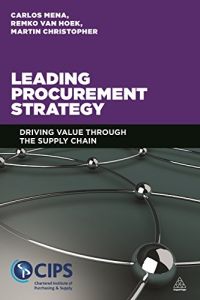Join getAbstract to access the summary!

Join getAbstract to access the summary!
Carlos Mena, Remko van Hoek and Martin Christopher
Leading Procurement Strategy
Driving Value Through the Supply Chain
Kogan Page, 2014
What's inside?
Procurement – formerly called “purchasing” or “supply” – used to be a business backwater. Now it’s a strategic edge.
Recommendation
Procurement – once known merely as “purchasing” or “supply” – used to be a business backwater with no prestige. Today, procurement is increasingly important as a strategic differentiator. The way procurement executives plan, organize and manage your supply chain is the “only source of sustainable competitive advantage remaining today.” This collection of informed essays by supply-chain experts Carlos Mena, Remko van Hoek, Martin Christopher and others details the current best practices in this crucial area. getAbstract recommends this anthology as an indispensable minicourse on corporate procurement and its likely future direction.
Summary
About the Authors
Carlos Mena directs the Center for Strategic Procurement and Supply Management at the Cranfield School of Management, where Remko van Hoek is a visiting professor. Martin Christopher previously headed Cranfield’s Demand Chain Management department.

















Comment on this summary